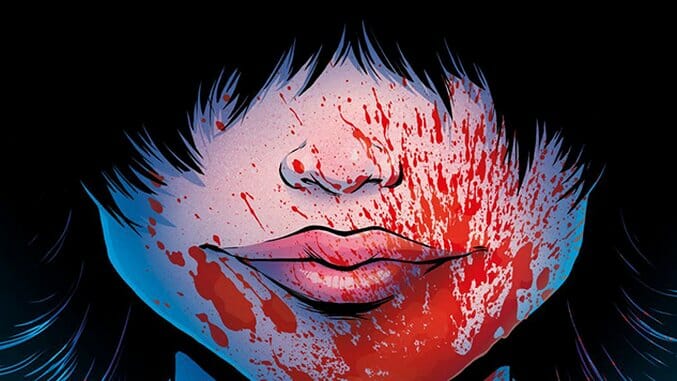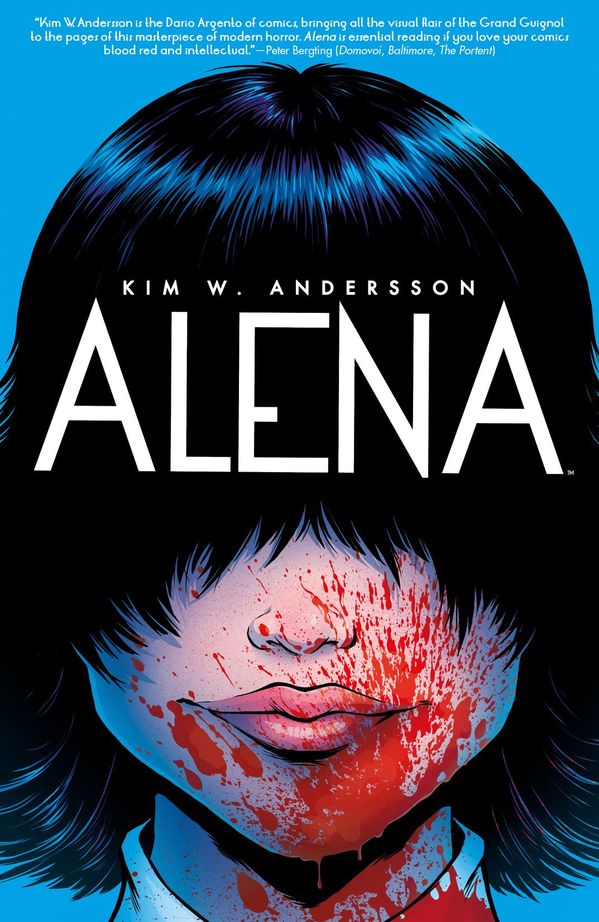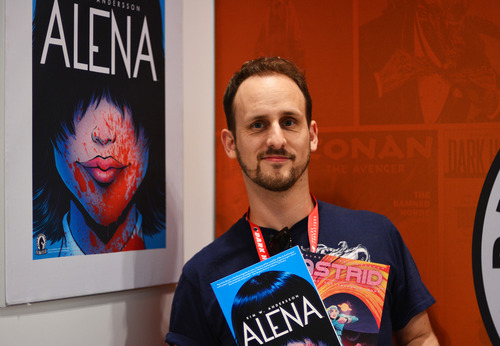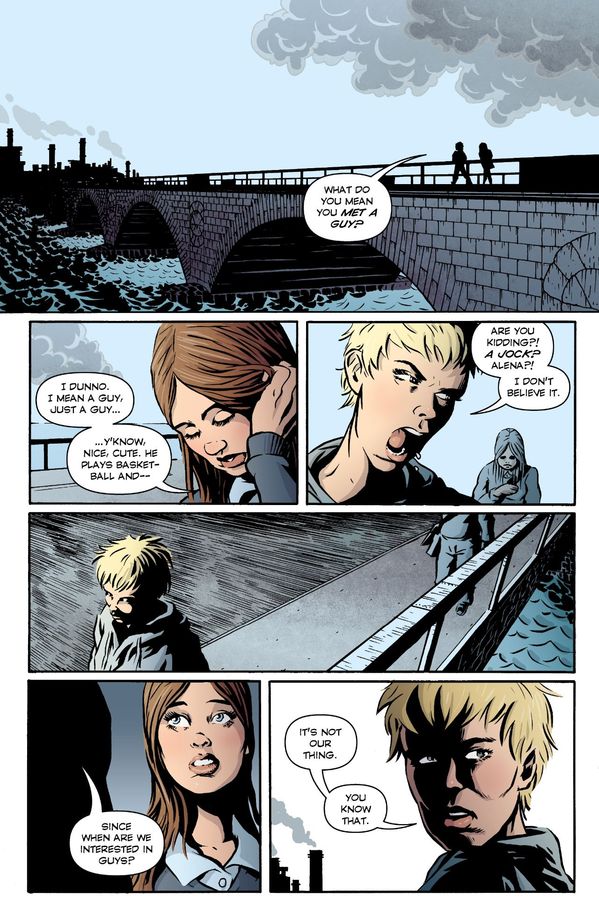Swedish Cartoonist Kim W. Andersson Embraces Teen Angst in Alena
Photo courtesy Robert Tutton
Alena is not a particularly happy girl. She’s the poor kid in an affluent school. She’s the target of a predatory gaggle of bullies, the leader of which is a special kind of terrible. As if that weren’t enough, she’s also struggling with some very heavy issues concerning the recent death of her best friend, Josephine. Oh, and her dead friend is still hanging around, further complicating her life.
In Alena, Swedish cartoonist Kim W. Andersson offers an unflinching look at being a teenager. The looming half-mystery of what exactly Alena and Josephine shared is only the splash, whereas this story lies in the ripples. Alena finds herself torn in many ways — between her feelings for Josephine and the boy she likes, between wanting to fit in and lash out, between guilt and grief— so it’s fitting that scissors become such a pointed engine of carnage as the narrative progresses. Ghosts aside, her struggle is weighted with real issues. Andersson doesn’t shy away from teenage awkwardness, and much like Alena gripping bloody, sharpened office supplies, he embraces the angst. (For a more visceral look, check out the trailer for the recently released film adaptation, which just had its US debut at the Santa Barbara International Film Festival.)
Paste caught up with Andersson while he was in town for New York Comic Con to chat about Alena and his new project for Dark Horse, Astrid.
![]()
Paste: Horror and teen angst go well together. How’d you try to make it different?
Kim W. Andersson: When you’re writing about teens, for me at least, you always start writing about angst, because that’s what being a teen is all about. Everything happens for the first time, and everything is so dramatic because it’s the first time you’re experiencing it. I did Love Hurts for a few years in a magazine called Nemi. I gathered a following and there were a lot of teenage girls reading my comics, a lot of goth and emo teenage girls. I was so happy about that because I was doing exactly the comics that I wanted to make. So I guess that meant I was a goth teenage girl at heart. So when I started doing Alena, I wanted to give them something more, a story of substance. I feel a lot of things that are aimed at that group kind of patronizes them, and I tried to not do that… Hopefully I succeeded.
Paste: What sort of things inspired Alena?
Andersson: Carrie by Stephen King—more the movie—was a big inspiration for me. I’m inspired by a lot of horror movies. I really like Junji Ito’s Uzumaki and Gyo. Japanese horror translates very well in the comics medium. When we started making the movie, I had to revisit Alena and re-read it several times, and think, Why did I do this book? I don’t really have to ask myself those questions when I‘m making a book because I’m all alone. I both draw and write it, so I just make it, but when you’re in a team, those questions arise in the process. Alena contains a lot of different subgenres of horror—it’s a thriller, a slasher, a lot of different things.

Alena Cover Art by Kim W. Andersson
Paste: What’s your favorite horror subgenre?
-

-

-

-

-

-

-

-

-

-

-

-

-

-

-

-

-

-

-

-

-

-

-

-

-

-

-

-

-

-

-

-

-

-

-

-

-

-

-

-












































